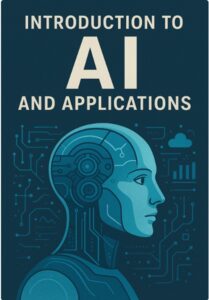Dr.Thyagaraju G S ,etal.,
Summary of the Literature Survey Made : Introduction : The losses in crop yield due to pathogen infections range between 20% and 40%.Detection and identification of diseases in crops could be realized via both direct and indirect methods.Direct detection of diseases includes the disease causing pathogens such as bacteria, fungi and viruses are directly detected to provide accurate identification of the disease/pathogen.Indirect methods identify the plant diseases through various parameters such as morphological change, temperature change, transpiration rate change and volatile organic compounds released by infected plants.Areca Nut Tree Diseases:‘Kole Roga’ or ‘Mahali’ (Fruit Rot) : Koleroga or Mahali is a major disease of arecanut causing serious losses. The pathogen is a fungus Phytophthora palmivora. Characteristic symptom is rotting and extensive shedding of the immature nuts which lie scattered near the base of the tree. The infected nuts lose their natural green lusture, quality and hence have a low market value.
Yellow leaf disease : Yellowing of tips of leaflets in 2 or 3 leaves of outermost whorl. Brown necrotic streaks run parallel to veins in unfolded leaves. Brown necrotic streaks run parallel to veins in unfolded leaves. Yellowing of leaves is conspicuous during October to December. Finally the crown leaves fall off leaving a bare trunk. Root tips turn black and gradually rot.
Anabe roga/foot rot : The leaf lets in outer whorls become yellow and spreads to the whole leaf and the leaves droop down covering the stem. Later, the inner whorl leaves also become yellow. Subsequently all the leaves droop, dry up and fall off, leaving the stem alone. Roots become discoloured, brittle and dried.
Rubber Plant DiseasesBark Necrosis : The resulting deep disintegration of the trunk phloem and bark tissues explains the irreversible blockage of latex production. Rubber tree bark necrosis, its appearance and development, therefore results from the accumulation of climatic and human-induced stresses and physiological malfunctions in the grafted trees.
Dry Rot : Caused by Ustulina deusta. Its is observed near the collar region, on the main trunk or even on the branches during the rainy seasons. The fungus penetrates the wood and spreads inside. As a result the wood becomes soft and the trees break down.
Design and Development of Disease Prediction System to Map Areca Nut and Rubber trees of specified location with the predicted disease using Machine Learning Techniques. The disease will be predicted based on previous data sets comprising features like :Type of TreeGeographical Location TemperatureHumidity Moisture Level Rainfall StatusWind StrengthNuts Color Leaf Color Trunk Color Nutrition LevelQuality of Nuts Root Tips Color Color LevelRoot Status BrittleDryColorInner Leaves StatusAge of TreeMonth of Disease Season Climatic Stress LevelHuman induced Stress LevelPsychological Malfunctioning Wood Strength Leaf ImageTrunk Image Collar Region Image Root Image Nuts Scattered Image Tree Images
Ideas : Following three ideas was proposed by the team members IoT based System monitoring , prediction and Mapping system for a given set of trees making use of high resolution Cameras and Raspberry PI .Prediction and Mapping through Analyzing the PCR Readings. Prediction and Mapping through Analysing and Modeling the Past Geographical based Data Sets using Supervised Machine Learning and Deep Learning Techniques.
Prediction and Mapping through Analysing and Modeling the Past Geographical based Data Sets usingAI techniques like Supervised Machine Learning and Deep Learning Techniques.
Risk Factor : Projects Need no Specific Equipment or Devices.But iIt needs the accurate and Large Data Sets. Project will be implemented using Python Programming Language and AI Techniques using Jupyter Notebook and DJango FrameWork .
Project Implementation Strategy (Redefined Approach) : Disease Mapping of Arecanut and Rubber Tree using DPS based on AI Techniques ( Like Expert System , ML , Deep Learning and Computer Vision) .
Team members are hereby informed to allocate the work properly and contribute to the project equally. Phase1 , Phase 2 and Phase3 can be executed parallely . Allocate the members for each phase and start the work .
Phase1: (a) Re Design the Architecture of the proposed System and submit by 7/4/2021(b) Prepare Project Execution Plan ( Define the Project Life Cycle) and submit by 9/4/2021
Phase2:(c) Prepare a Survey Questions and Perform Field Survey by interviewing Famers (offline and online) on or before 10/4/2021(d) Visit and Interact with Faculty of Agricultural department and collect data sources .(offline and online) on or before 15/4/2021)(d) Identify any other different Sources of Data sets (on or before 17/04/2021)(e) Collect all Data Sets Required and as large as possible in raw or available form.(20/4/2021)Note : While Collecting the data sets make ensure your data set has the following features/data value for Each disease: (Select suitable parameters for both Arecanut and Rubber Tree) { Type of Tree , Geographical Location,Survey No, Address, Temperature, Humidity, Moisture Level ,Rainfall Status,Wind Strength, Nuts Color, Leaf Color, Trunk Color, Nutrition Level, Quality of Nuts ,Root Tips Color , Root Dry status, Inner Leaves Status,Age of Tree,Month of Disease, Season ,Climatic Stress Level,Human induced Stress Level, Level of Psychological Malfunctioning ,Wood Strength, Leaf Image, Trunk Image ,Collar Region Image Root Image ,Nuts Scattered Image, Leaf Images,Tree Images, etc.}
Phase3: [ Team can start with any dummy data sets or any available other standard disease data sets] Start from 10/4/2021 and End on 31/5/2021]Start with any available Data Sets Available (f) Perform Data Preprocessing and Feature Engineering to obtain clean and structured data sets (g) Prepare Training and Testing Data sets (h) Train and Identify the best Models/Algorithms for Prediction and Mapping Validate (i) Design and Develop user interface [ Web App]j.Integrate UI with Model Developed(j) Deploy on the cloud (k) Do Field Testing and Get Feedback
Progress Status ( Compare with that of the Previous Week) of the Following : 1. Data Sets Collected / Data base Design 2. ML Model 3. Conceptual Design of the Front End.
Architectural Design










